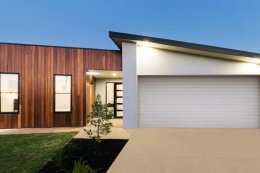
Hi everyone,
Over the last couple of weeks I’ve said the economy has been at a real tipping point. The Reserve Bank and federal government have to be careful not to push it over the edge because things could deteriorate pretty quickly.
This week gave us some critical economic signposts. The RBA decided to keep interest rates on hold and the latest economic growth figures were pretty anaemic – without the impact of migration the economy would be in recession.
As expected, at their meeting on Tuesday, the RBA Board decided to keep interest rates on hold at 4.35 per cent… but they still aren’t convinced inflation is under control and are ready to lift rates again. The Board won’t meet again until the first Tuesday in February, which is the week after the December quarter CPI is released.
As I said last week, the December quarter CPI announcement on 31 January is so crucial to interest rates next year.
While Tuesday’s rate pause was expected, the accompanying statement from RBA Governor Michele Bullock had a lot to say.
She noted, “the monthly CPI indicator for October suggested that inflation is continuing to moderate, driven by the goods sector; the inflation update did not, however, provide much more information on services inflation”.
The Board’s concerns on inflation at this juncture are centred around the services side of the economy… all services, not just dentists and hairdressers, which Bullock recently referred to when making the point.
In terms of wages, the Governor said, “wages growth picked up in the September quarter, but this was expected given that it captured the earlier Fair Work Commission decision on award wages.”
The rest of the Governor’s statement simply stuck to the script of the November statement.
Australian households are putting the brakes on the economy.
The September quarter economic growth figures this week came in much weaker than expected… 0.2 per cent over the quarter against an expected 0.5 per cent. For the year, economic growth was 2.1 per cent. Probably best described as sputtering along.
Migration levels are propping up the economy as household consumption is being squeezed by a huge increase in interest payments strangling disposable income.
Over the last four quarters, the economy is steadily slowing — the December quarter last year had growth at 0.9 per cent, 0.5 per cent for the March quarter, 0.4 per cent in the June quarter and now 0.2 per cent.
The six‑month annualised pace of GDP growth to the September quarter has slumped to just 1.3 per cent. In reality, the economy has gone backwards in per capita terms a lot over the past six months.
Looking at the bigger picture, growth in real consumer spending has slowed materially over the past year, given the squeeze on real household disposable income.
Household spending is down and savings rates are hitting rock bottom.
Other past worries for the RBA have been the strength of the job market and inflation. But this week:
The ANZ-Indeed Australian job advertisements index fell 4.6 per cent in November, down for a third straight month. It was the steepest monthly decline in advertisements since the height of the pandemic in May 2020. The index is at the lowest level since October 2021, with ads down 16.8 per cent on a year ago. The biggest falls were in NSW and Victoria.
The Melbourne Institute Monthly Inflation Gauge rose by 0.3 per cent in November, driven by holiday travel & accommodation (up 2.9 per cent) and new dwellings costs (up 1.2 per cent), offsetting price declines across furniture and food. But the annual growth rate eased from 5.1 per cent in October to 4.4 per cent in November… the slowest pace in 19 months.
Complicating matters is the continued resilience of Australia’s housing market. In data released by the Bureau of Statistics the value of new owner-occupier home loans jumped 5.6 per cent in October 2023, the most since November 2021. And housing finance approvals to investors rose by 5 per cent, the biggest lift in five months.
Why aren’t we getting the benefit of falling energy prices?
As the Economic Director for Compare the Market, I challenged the energy team to find the answer. It turns out the reason we’re paying higher energy prices is because, after years of neglect, we have to rebuild our energy infrastructure.
Compare the Market is warning Australians that electricity prices could remain high for the next decade, with consumers bearing the brunt of network transformations.
Latest figures show wholesale electricity prices in the National Electricity Market were down around 50 per cent on the previous year in many states… so why are household energy prices remaining high?
The answer is there is more to pricing than just wholesale costs, with a mix of environmental and business costs weighing heavily on bills.
Outdated electricity grids and networks have been expensive to maintain and will cost even more to transform over the next 10 years. None of these changes will happen overnight, so we could face a long, protracted period of price pressure.
Wholesale prices only account for a third of what makes up your energy bill. A range of other factors will continue to influence energy prices in 2024.
Just as you’ve noticed prices increasing across the board in your daily life, network costs are going up for our energy distributors and retailers. Due to inflation, the cost of materials to maintain the network has increased, rising fuel costs mean it’s costing more for distributors to read meters, update wires and transform the grid.
On top of that, Australia has renewable energy commitments to meet. While federal and state governments, retailers and distributors are working to make that happen, it costs a lot of money. Unfortunately, consumers foot part of that bill.
The fact of the matter is that there wasn’t previously a lot of investment or forward-thinking into the renewables transition.
But some discounts are available for people willing to take the time to sniff them out. At the time of writing, there were energy plans with up to 18 per cent off the reference price on Compare the Market’s energy panel.
So consider switching over, rather than switching off, to save money.
Hundreds of thousands of households are on so-called ‘standing offers’ which means they’re paying more than they need to. Energy retailers are legally obligated to display the percentage difference between their market electricity plan on offer and the default offer – which makes it easy to compare.
What else is in your energy bill?
Distributor costs
In addition to the price retailers pay for wholesale electricity, they also need to factor in costs to transport and distribute electricity to households – which have gone up due to inflation.
Distributors are the energy companies that maintain the gas pipes, electrical poles and wires and read electricity and gas meters.
So as the cost of materials and transport has gone up, it’s been passed on to consumers through their energy bills.
Environmental costs
Renewable energy is really ramping up in Australia and while we should eventually see prices fall, it does come with an upfront investment and transitional period.
What many people don’t realise is that while national and state-based schemes require retailers to produce a set amount of renewable energy, retailers incur a cost to implement these strategies.
Bulk buying
Retailers purchase electricity ahead of time at a fixed price to help mitigate risks in a volatile market.
This can mean that if prices drop, it can take time for customers to see the benefits.
Retail costs
Regulators also factor in costs that retailers incur to sell electricity.
It’s best to think of these retailers as businesses. Like any business, there are day-to-day costs to operate and service customers, market to customers, install and maintain meters.
They also need to put funds aside for customers who don’t pay their bills, are in debt or need to be on hardship programs.
Retail allowance
Energy regulators want customers to have access to fair and affordable electricity plans. To do this, there’s a retail allowance factored into the DMO and VDO, which encourages retailers to invest, innovate and compete in the market.
But remember, retailers are free to set prices above the DMO or VDO, so the idea of the retail allowance is to encourage them to offer deals lower than the standing offer.
Metering costs
As Australia’s electricity grid continues to evolve, so do the types of meters that help determine how much electricity we’re using.
Advanced metering infrastructure is being rolled out to more homes across Australia, allowing electricity to be read remotely, data to be tracked regularly, and more.
But these new technologies cost money to roll out. It’s a balancing act between getting the most effective new devices into homes, while managing costs faced by consumers.
Beware of home loan incentives
Competitive rates, cashback offers, and lowered serviceability buffers are some of the home loan sweeteners being used to attract new borrowers this silly season.
The home loan market is certainly back and bubbling away with competition, but it is up to homeowners to sniff out the best deals.
Some of the lenders that are still offering $2,000 or more in cash back include ME Bank, RAMS, BOQ, Bank SA, St George, Reduce Home Loans and ANZ.
But be careful not to fall into a honey trap. Make sure the cashback deal is attached to a low rate, otherwise it may not be worth it.
When the difference between some of the best and worst rates available is 1 per cent or higher, it’s crucial to shop around to make sure you’re on the most competitive rate.
A person with a $600,000 loan size may be better off refinancing to a lower variable rate of 5.99 per cent without a cashback offer, compared to refinancing to a higher variable rate of 6.44 per cent with a $2,000 cashback.
This is because they will have eaten into the $2,000 cashback after 11.5 months and wind up paying more money over the life of the loan.

Meanwhile, Westpac, NAB and Commonwealth Bank have lowered their serviceability buffers, from 3 per cent to 1 per cent to help people break out of mortgage prison.
St George, Bankwest, Pepper Money and Bluestone have also thrown a lifeline to overleveraged borrowers that meet certain criteria.
But easier eligibility won’t necessarily translate to a better deal. If your loan-to-value ratio is above 80 per cent you may be missing out on some of the cheaper rates on offer for borrowers who have paid off more of their debt.
With the cash rate now at its highest point in over a decade, it is extremely important to shop around to minimise the interest on your repayments as much as possible.
Head to Compare the Market to see how your home loan interest rate stacks up.







